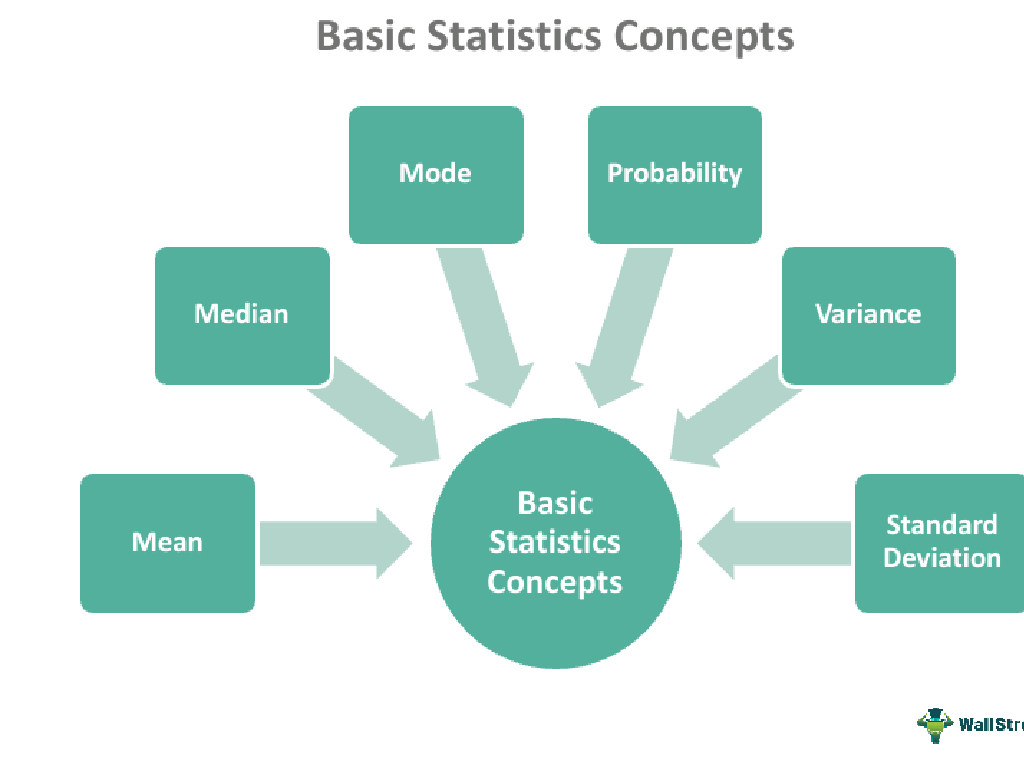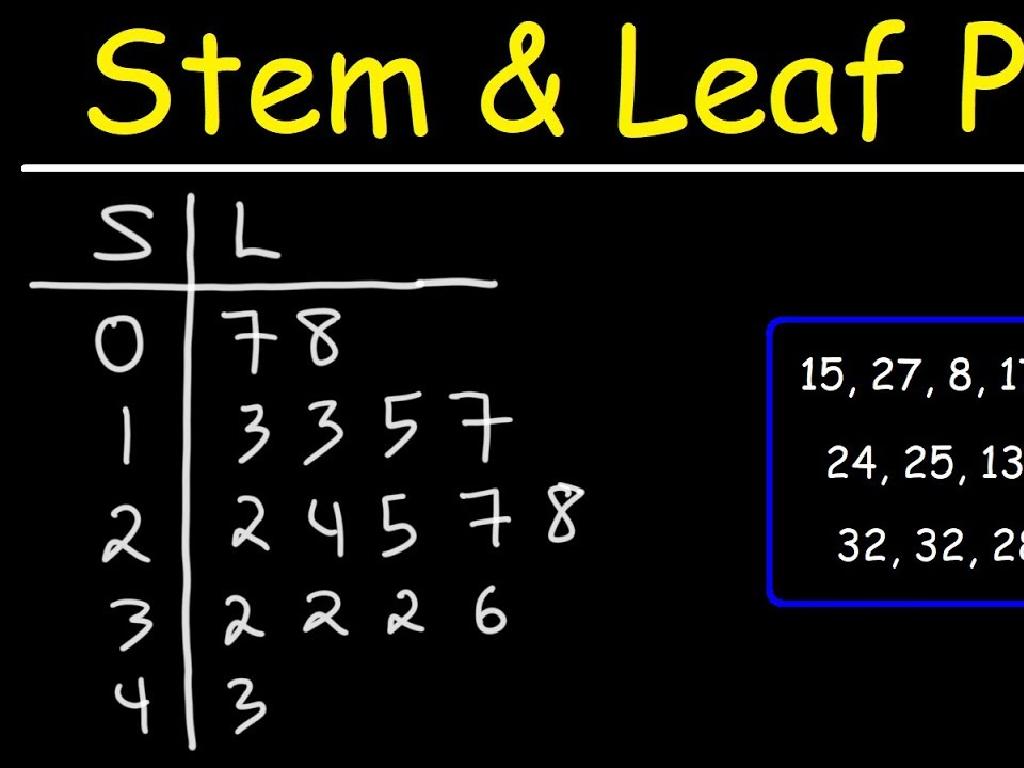Scaling Whole Numbers By Fractions
Subject: Math
Grade: Fifth grade
Topic: Scaling By Fractions
Please LOG IN to download the presentation. Access is available to registered users only.
View More Content
Scaling Whole Numbers by Fractions
– Understand fractions & whole numbers
– Fractions represent parts of a whole. Whole numbers are complete units.
– Define scaling in math
– Scaling means to resize numbers by a certain factor.
– Scaling in daily life
– Examples: Recipes, measuring distances, or resizing images.
– Practice scaling examples
– Use fractions to multiply whole numbers for scaling.
|
This slide introduces the concept of scaling whole numbers by fractions, which is a fundamental skill in mathematics, especially relevant to real-world applications. Begin by ensuring that students have a solid understanding of what fractions and whole numbers represent. Then, explain scaling as the process of multiplying or dividing numbers by a specific factor to increase or decrease their size. Provide everyday examples where scaling is necessary, such as adjusting a recipe or calculating a road trip distance when given a map scale. Encourage students to think of other examples where they might need to scale numbers. Conclude with practice problems where students apply fractions to scale whole numbers, reinforcing the concept.
Recap: Fractions and Whole Numbers
– Review: What are fractions?
– Fractions represent parts of a whole, like 1/2 or 3/4.
– Review: What are whole numbers?
– Whole numbers are numbers without fractions, like 1, 2, 3.
– Examples of fractions
– 1/3 of a pizza, 2/5 of a dollar
– Examples of whole numbers
– Counting items: 1 apple, 2 dogs, 3 cars
|
Begin the lesson with a quick recap of fractions and whole numbers to refresh the students’ memory. Explain that fractions are used to represent a part of a whole, giving examples such as a slice of pizza or a portion of money. Then, clarify that whole numbers are the numbers we use for counting complete items, without any fractions or parts. Provide relatable examples for both concepts to ensure understanding. This review sets the foundation for learning how to scale whole numbers by fractions, which will be covered in the following slides.
Introduction to Scaling with Fractions
– What is scaling in math?
– Multiplying to resize numbers or shapes
– Importance of scaling
– Helps in understanding proportions and models
– Scaling in everyday life
– Recipes, maps, and building models use scaling
– Practice scaling with examples
– Multiply whole numbers by fractions to scale
|
This slide introduces the concept of scaling, which involves multiplying a number or a shape by a fraction to increase or decrease its size proportionally. Emphasize the importance of scaling in understanding ratios and creating accurate representations in models, such as in cooking or when reading maps. Provide real-life examples where scaling is applied to help students relate to the concept. Encourage students to think of situations where they have encountered scaling. Conclude with an activity where students practice scaling whole numbers by fractions to solidify their understanding.
Scaling Whole Numbers by Fractions
– Multiplying whole numbers by fractions
– To scale, multiply the whole number by the numerator and divide by the denominator.
– Interpreting scaled results
– The result shows how the original quantity has changed.
– Scaling in recipes
– Example: Halving a recipe, multiply quantities by 1/2.
– Scaling in measurements
– Example: Doubling a length, multiply the number by 2/1.
|
This slide introduces students to the concept of scaling whole numbers by fractions, which is a practical skill in both cooking and measurement. Start by explaining the process of multiplying a whole number by a fraction: multiply by the top number (numerator) and divide by the bottom number (denominator). Emphasize that the result of this operation shows how the original number has been scaled up or down. Provide relatable examples such as adjusting a recipe or changing measurements, which are common tasks in everyday life. Encourage students to think of other situations where they might need to scale numbers. The goal is for students to understand the process and see the relevance of this mathematical concept in real-world applications.
Let’s Practice Scaling with Fractions!
– Scale a recipe using fractions
– If a recipe calls for 2 cups of flour and we want to make half, how much do we use?
– Scale a model using fractions
– A car model is 1/8 the size of the actual car. What are the model’s dimensions if the car is 16 feet long?
– Class problem-solving activity
– We’ll solve scaling problems together to learn the process
– Understand scaling application
|
This slide is designed to engage students in practical applications of scaling whole numbers by fractions. Start with an example of scaling a recipe, which is relatable and easy to visualize. Ask students how they would adjust the ingredients if they wanted to make half or double the recipe. Then, move on to scaling a model, such as a toy car, to understand proportions and the concept of scale. The class activity will involve working through problems collectively, ensuring that each student understands the steps involved in scaling. Encourage participation and assist students who may need extra help. The goal is to help students see the relevance of math in everyday life and to become comfortable with scaling as a mathematical concept.
Group Activity: Scale a Classroom Object
– Select an object in the room
– Agree on a fraction as the scale factor
– For example, choose 1/2 or 3/4 as your scale
– Calculate the object’s scaled size
– Multiply original dimensions by the scale factor
– Discuss the results as a class
|
This interactive group activity is designed to help students understand the concept of scaling whole numbers by fractions. Start by allowing students to pick any object in the classroom that they can easily measure. Once the object is selected, facilitate a class discussion to decide on a scale factor, which should be a fraction that the students are familiar with. Guide them through the process of calculating the new dimensions by multiplying the original measurements by the chosen scale factor. After the calculations, have each group share their scaled dimensions and discuss any observations or insights. Possible activities could include scaling a book, a desk, or a poster. Ensure that each group has a different object or scale factor to allow for a variety of examples during the discussion phase.
Scaling Practice and Quiz Preparation
– Practice scaling objects at home
– Use household items to scale with fractions
– Study for the upcoming quiz
– Review today’s lesson and try example problems
– Note down any questions
– Write down questions while studying
– Bring questions to the next class
|
For homework, students should find objects around their home to practice scaling using fractions, reinforcing today’s lesson. Encourage them to use different fractions to scale objects up or down. They should also prepare for a quiz on scaling by fractions, which will assess their understanding of the concepts taught. Students should review their notes and attempt the practice problems provided. If they encounter any difficulties, they should write down their questions to bring to the next class for clarification. This will ensure they are well-prepared and confident in their understanding of scaling whole numbers by fractions.






